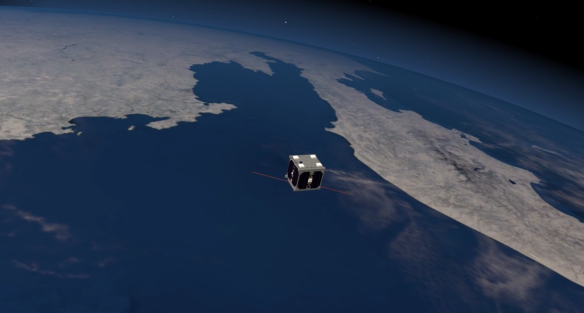Coming out of a project meeting Friday evening, the following wisdom came to my mind:
“The major difference between a thing that might go wrong and a thing that cannot possibly go wrong is that when a thing that cannot possibly go wrong goes wrong it usually turns out to be impossible to get at or repair.” – Anonymous
That project meeting yesterday was about sending a university research satellite to space. Sounds like fun, right? But if something goes wrong, we cannot get at it, and we cannot repair it. So we better make sure that nothing goes wrong. But: so many things can go wrong, and for sure everything we miss to consider probably *will* go wrong. Should I name this ‘Murphy-2’?
I think at the end, we have to appreciate all the ESA paperwork, right?
Happy Spacing 🙂
Links:
- CubETH Mission: http://www.video.ethz.ch/events/2016/cubeth.html


You can borrow a few sayings from Australia: “No worries” and “she’ll be right”. Debugging in space via a remote J-link for Satellites in orbit 400km up would make an interesting article.
LikeLike
Ah! I feel better now 🙂 Yes, that would be a very interesting article. But for space and power reasons apart of an unpopulated SWD connector for programming the final firmware there won’t be any debugging capabilities. But what we plan to keep in the firmware is a remote terminal/console capability we can use for inspecting the system. Additionally, the firmware is logging error/failure messages, so hopefully this will give some hints.
LikeLike
What is the satellite going to do? Will ham radio operators be able to access it?
Do you have time to write an article about the whole process and purpose of the satallite? It sounds very interesting.
LikeLike
The video (see the link) has some information about what it does. Basically it uses commercial GNSS receivers to determine the satellite position in space. Actually it uses special firmware, as normal GNSS/GPS receivers are not working above a certain altitude (so nobody can build a weapon with it). And yes, if I find time, I’ll write more about this project. It is definitely an interesting project 🙂
LikeLike
Some U-Blox modules do work at the higher altitudes.
They are used in student projects for high altitude balloon ‘Space Weather’ research.
http://news.spaceweather.com/category/high-altitude-ballooning/
LikeLike
Typically GNSS modules have a limit at an altitude of 18 km, and indeed I remember seeing reports about some u-blox working up to 50 km. As we plan to be >100 km, we will need a special firmware from u-blox to have them working.
LikeLike
There is also the Digi ConnectCore for i.MX6UL who is really small and really interesting
LikeLike
Pingback: Simulating Space on Earth: Irradiation Tests at the Paul Scherrer Institute | MCU on Eclipse